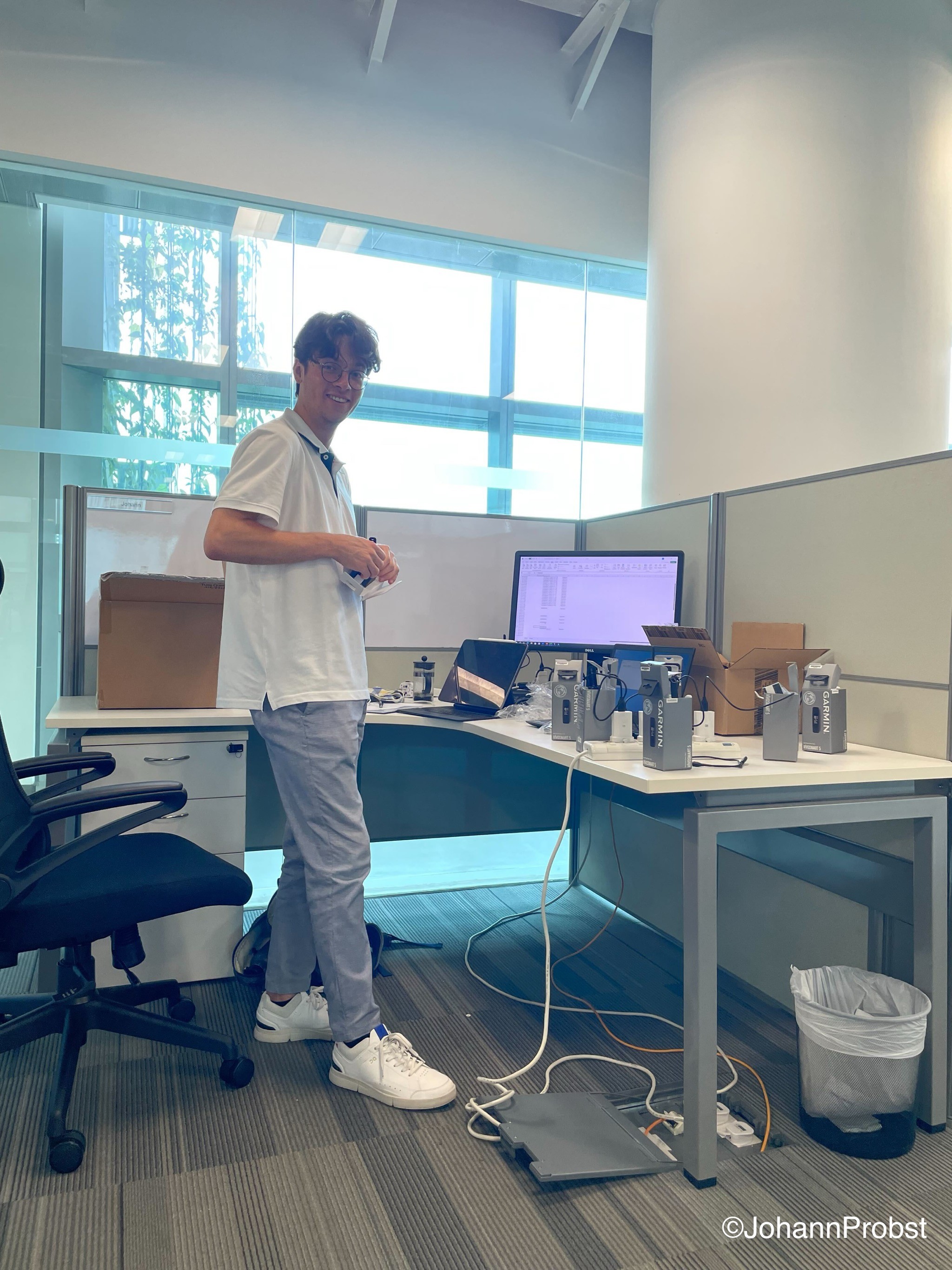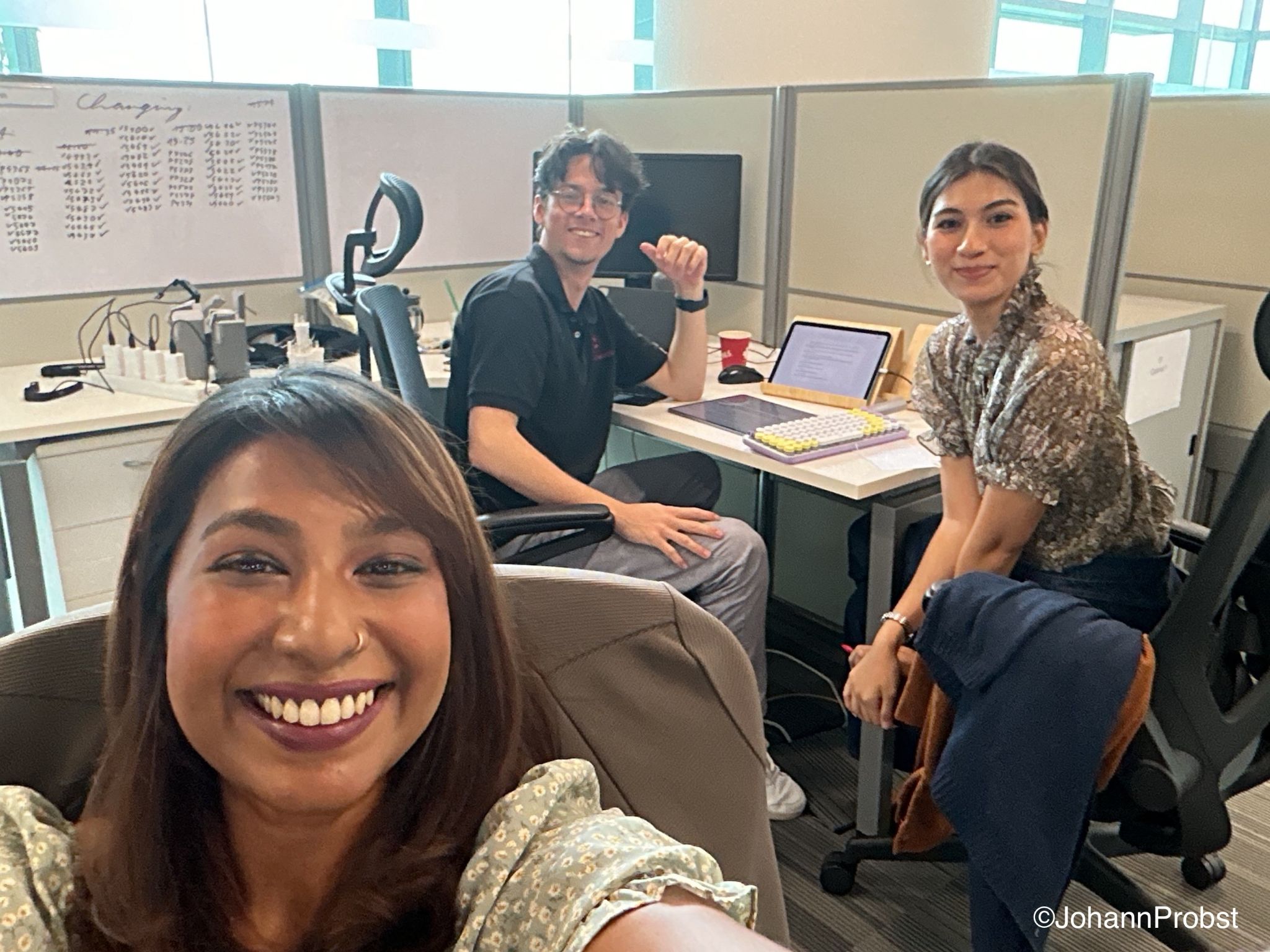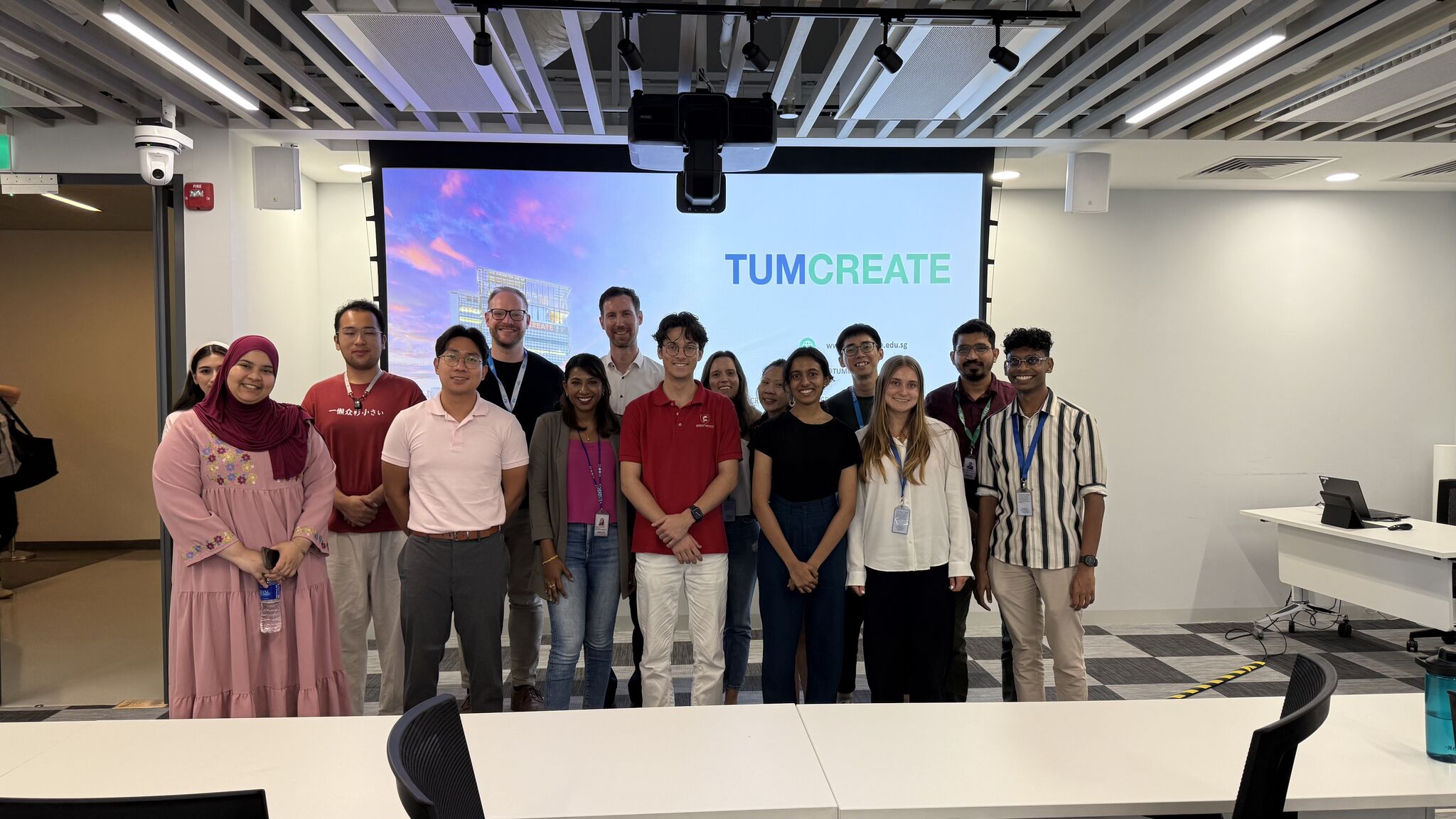- AquaCycle
- Proteins4Singapore
- Singapore's Pathway to Carbon Neutrality
- CellFACE
- LightSPAN
- Computational Modelling Group
- Energy and Power Systems Group
- SITEM - Singapore Integrated Transport and Energy Model
- Past Projects
News
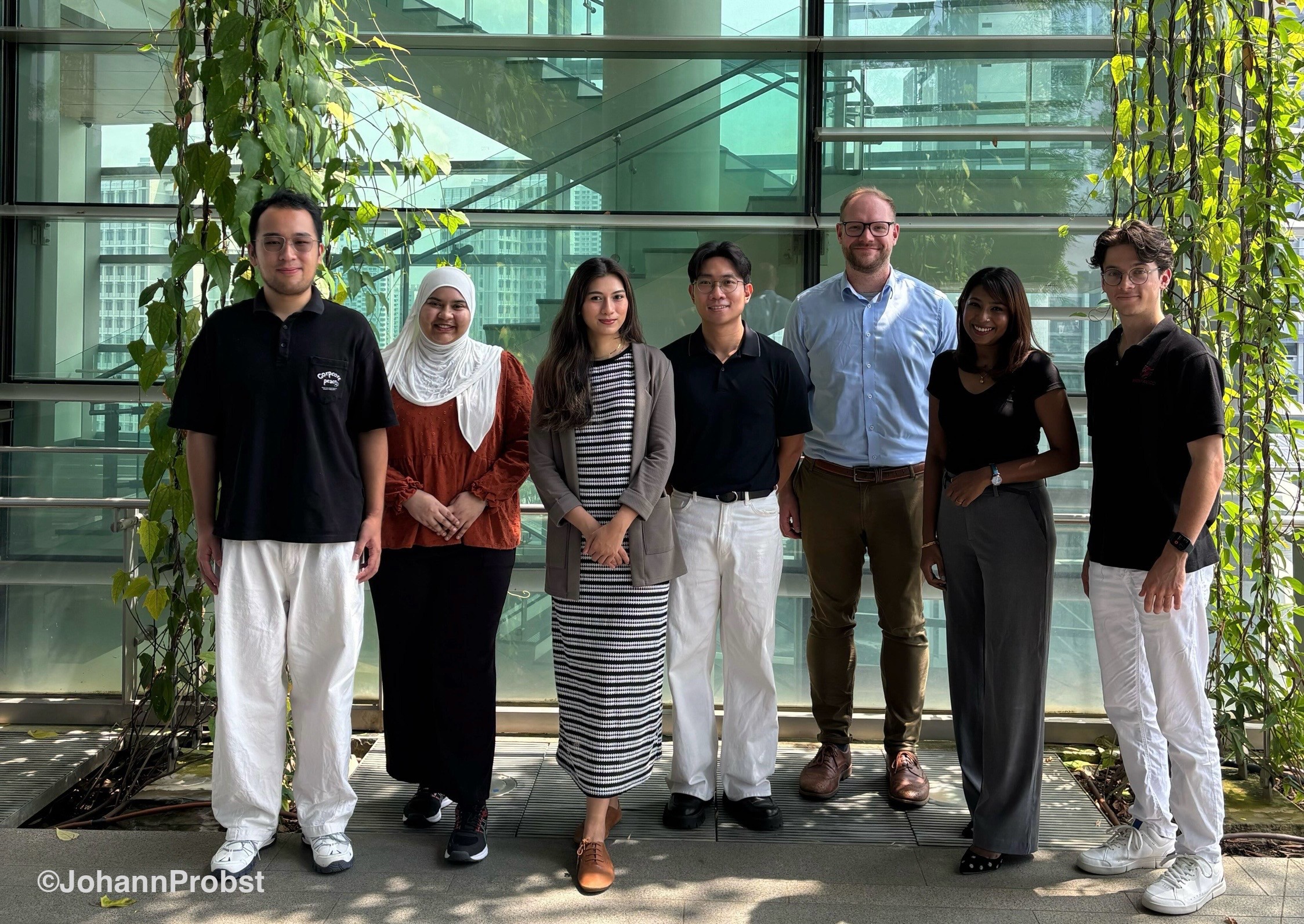
From TUMKolleg to TUMCREATE: Johann’s Internship with the LightSPAN team
29.09.2025When Johann Probst, a senior high school student in the TUMKolleg programme was searching for an internship, he chose TUMCREATE – a multidisciplinary research institute in Singapore.
Drawn by the health-tech research projects and the chance to work with an international team in TUM’s overseas campus, he flew from Germany to join a team of enthusiastic scientists and immersed himself in Singapore’s culture.
While such opportunities may feel daunting for many 18-year-olds, Johann is no stranger to them. His semester in Vancouver, Canada, as part of a high school exchange programme in 2023, sparked his pursuit of global learning.
At TUMCREATE, Johann joined the LightSPAN research team to support the preparation of a randomised controlled trial testing LightUP, an app-based digital-health intervention. The project investigates how light exposure can be optimised to support health and well-being across the lifespan.
Read about Johann’s time in TUMCREATE and the valuable lessons he gained along the way.
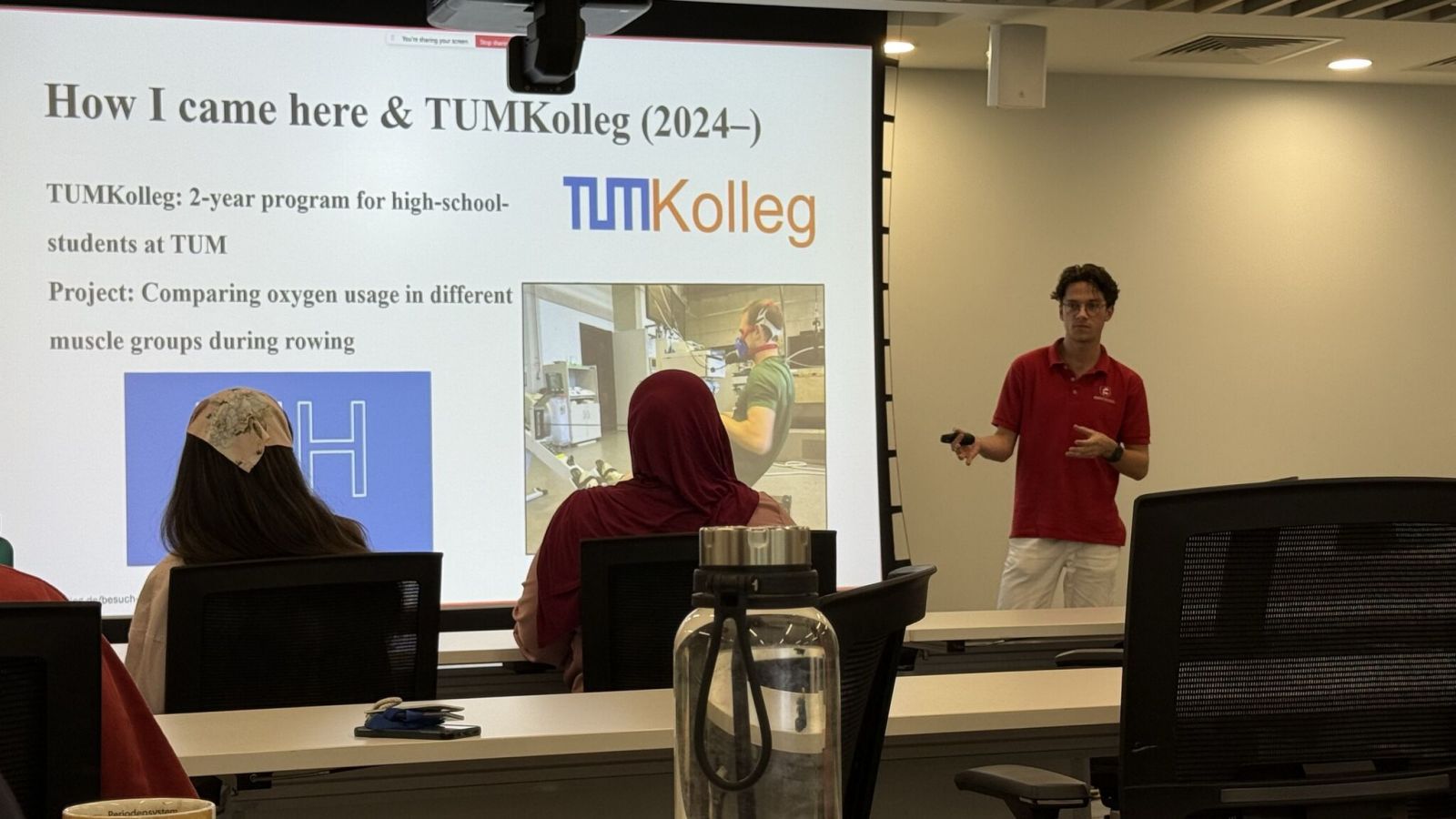
As a TUMKolleg student, you work on a specially designed research project at the Technical University of Munich (TUM) once a week. Could you share more about what you are working on?
We conduct individual research projects at a TUM professorship or research group of our choice. While we are taught in high school following an in-depth curriculum using diverse forms of teaching and learning, we can take part in selected courses at the university. Our research projects are spread across various TUM departments.
With my background in rowing, I chose the Department of Health and Sports Sciences to conduct a study investigating the “Maximum oxygen uptake and usage in rowing: Comparison of full body exercise versus single muscle training protocols” under the supervision of Dr. Fabian Stöcker.
That’s interesting! Tell us more about your research project.
The project started in January 2025 and is scheduled to conclude by the end of October. For the last eight months, I’ve spent my Wednesdays at TUM overseeing rowing performance tests to determine the maximum amount of oxygen used by different muscle groups during exertion. We performed three different exertion test protocols for each of the 12 participants, focusing on the legs, upper body, and full body respectively. Our results show that the amount of oxygen used during the exertion of the legs was similar to the amount of oxygen used by the whole body. Only a limited amount of blood can be used by the muscles during exertion, possibly because the blood pressure in the brain needs to be kept above a minimum threshold. These findings have practical applications: They can enhance the rowers' training strategies. My final step is to write and submit a research paper.
How did you learn about the opportunity at TUMCREATE and what made you go for it?
At TUMKolleg, we were challenged to seek out an internship at an international company or institution. I came across TUMCREATE which stood out for its international orientation and the focus on projects around digital health.
While I love to travel and have been to different countries and cultures, I had never been to Asia. Having the chance to combine the internship with a dive into Singapore, one of the most fascinating cities of the world, turned out to be a unique and rewarding opportunity for me.
What was your experience as a Research Assistant working on the LightSPAN research project at TUMCREATE like?
During my internship with the LightSPAN group, the team was a few weeks away from testing their new “LightUP” app and all its components out in the open for the first time, and many preparations were underway. I learnt how many hours of careful and dedicated work it takes to get ready all the components from the app availability over device setup to its final testing. I saw how closely the team needed to work together to make the project happen.
My task was to come up with and evaluate ways to adapt the project to other climatic regions such as Germany. I am very thankful that Dr. Resshaya Murukesu, postdoctoral fellow, and Prof. Dr. Manuel Spitschan, principal investigator of LightSPAN, took the time to show and explain all the aspects of the project and the underlying biological principles and mechanisms. All the members of the group really supported me, and it made integrating into a new environment easier.
Share with us one major highlight during your time here.
The highlight of my time in Singapore was the presentation of my work not only to the whole LightSPAN team, but also to the rest of TUMCREATE. Presenting in front of such an experienced group was challenging, but it made me proud as I was able to share the results of my time at LightSPAN. In fact, to be part of the team was an exceptional experience.
What’s next for you?
I’m preparing for the Abitur exams, the German general university entrance qualification, an A-levels equivalent, to graduate in early June 2026. I’ll commence university later in 2026. I’ve not decided yet, but it’ll be within the fields of medicine or engineering. I also hope to discover new places and learn more about international research projects.
The LightSPAN project is a collaboration between TUMCREATE and the Yong Loo Lin School of Medicine, National University of Singapore (NUS Medicine) and is supported by the National Research Foundation, Prime Minister’s Office, Singapore under its Campus for Research Excellence and Technological Enterprise (CREATE) programme.
Contact:
Corporate Communications TUMCREATE
1 CREATE Way
#10-02 CREATE Tower
Singapore 138602Media and Communications
communications@tum-create.edu.sg


